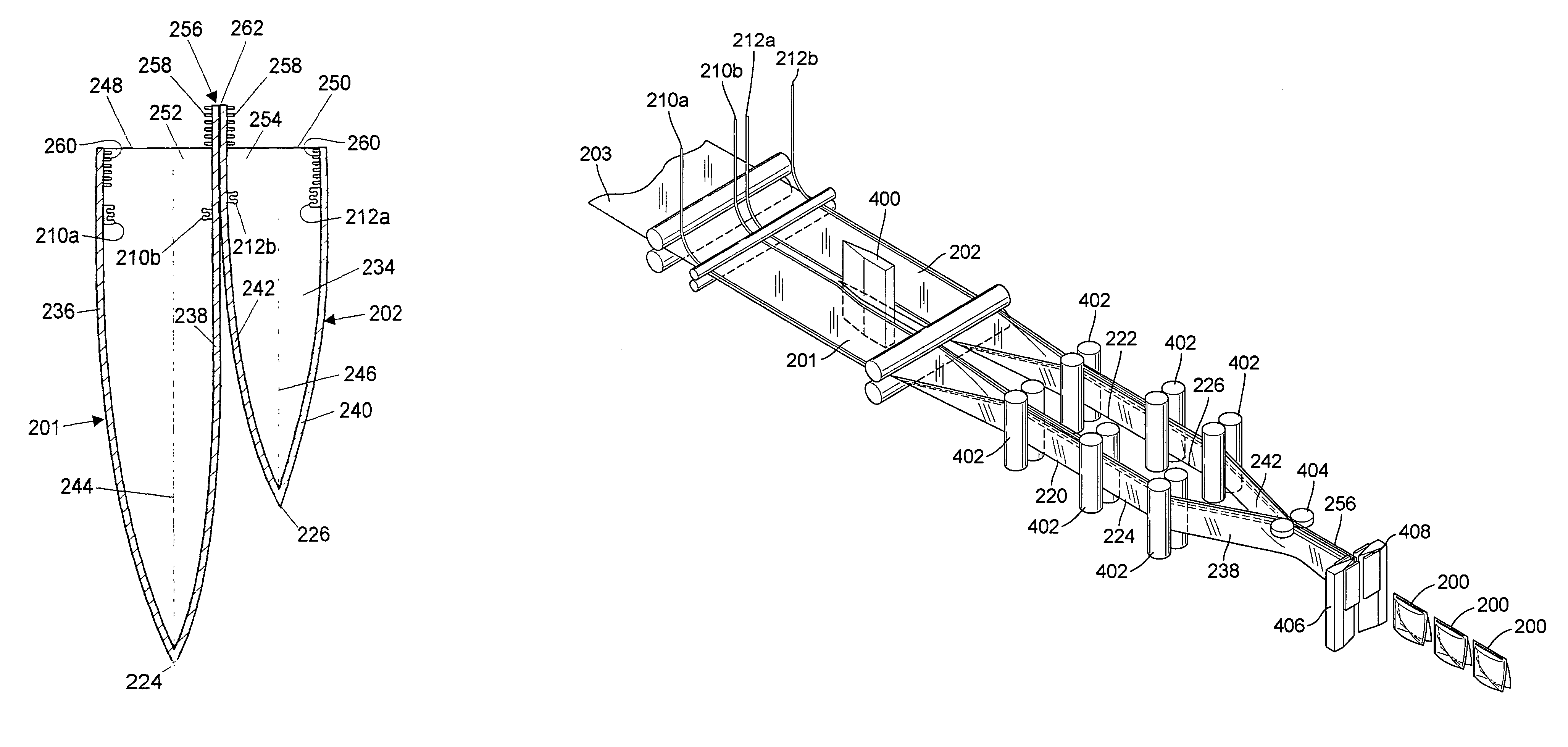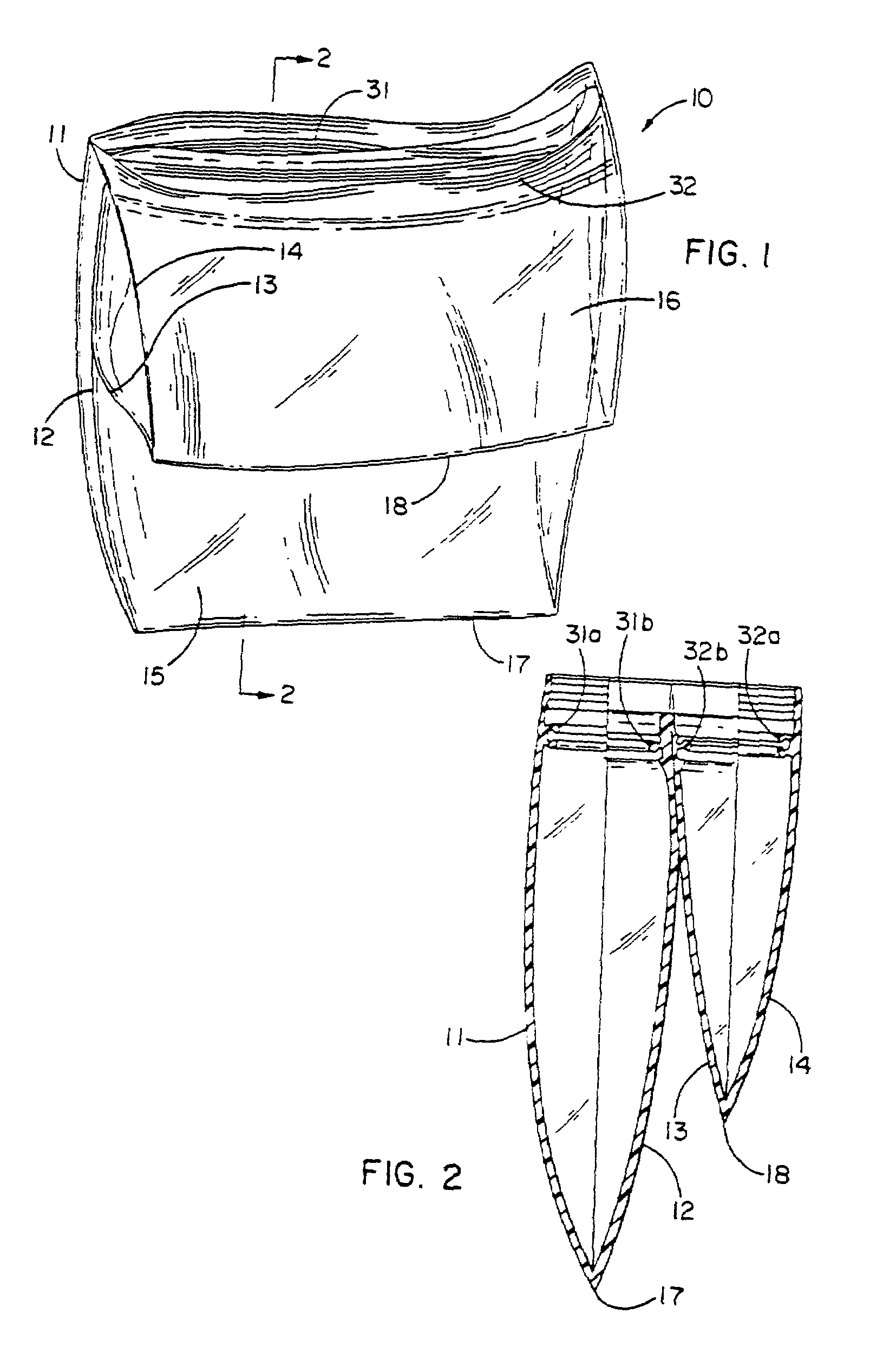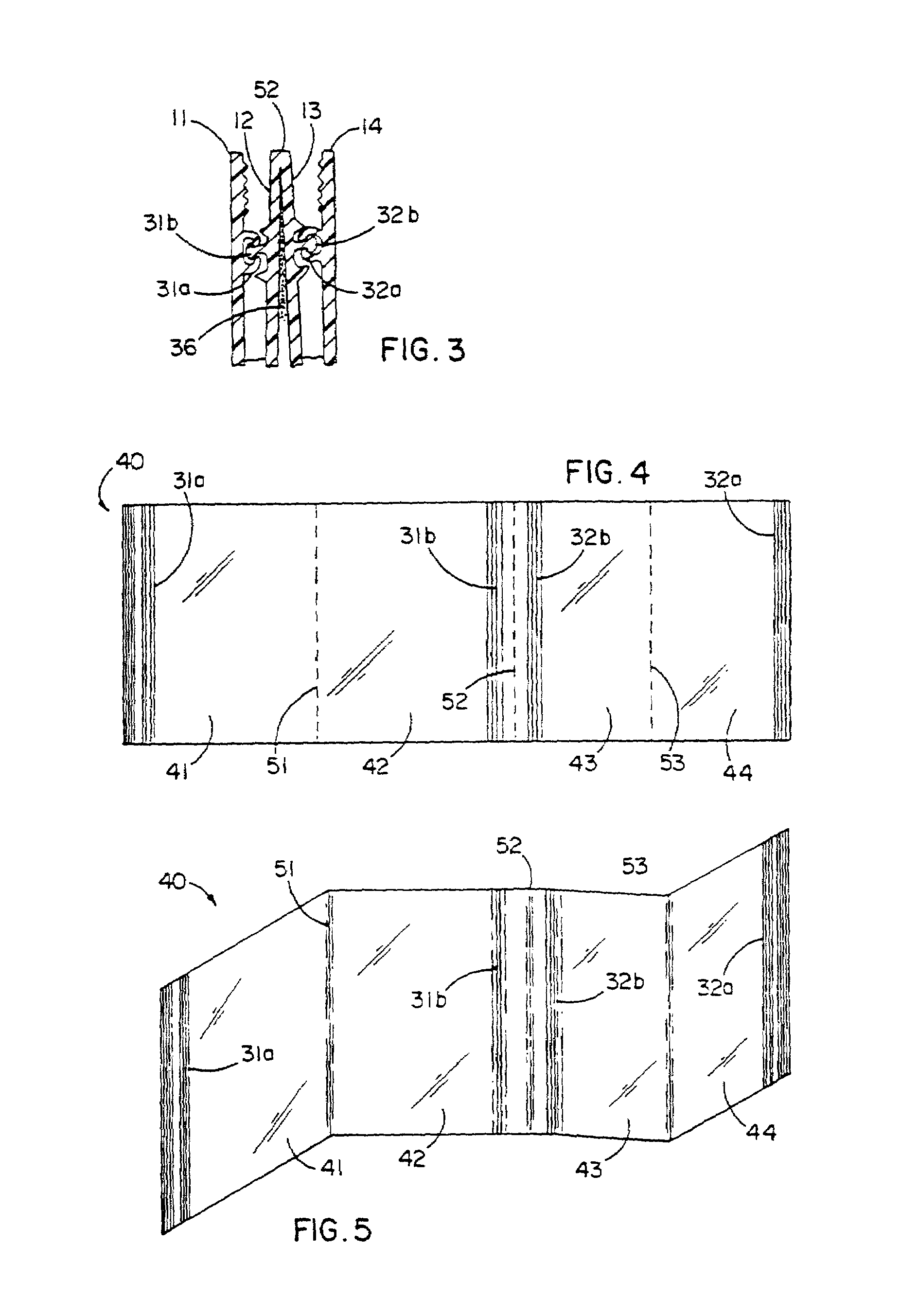Method for making a multicompartment thermoplastic bag
a thermoplastic bag and multi-compartment technology, applied in the field of reclosable thermoplastic bags, can solve the problems of restricting the available volume inside the compartment, and affecting the service life of the consumer
- Summary
- Abstract
- Description
- Claims
- Application Information
AI Technical Summary
Benefits of technology
Problems solved by technology
Method used
Image
Examples
example 1
[0076]A multicompartment bag having two compartments is made. The first compartment has the dimensions 6.625 inches long (16.83 cm) by 7 inches wide (17.78 cm). The second compartment has the dimensions 4.75 inches long (12.06 cm) by 7 inches wide (17:78 cm).
[0077]Both of the sidewalls of the first compartment are 1.1 mils (0.028 mm) thick on average. Both of the sidewalls of the second compartment are 1.1 mils (0.028 mm) thick on average. A groove profile of a plastic zipper is disposed along the outer layer of the first compartment, formed by a cast integral extrusion process. Likewise, a groove profile of a plastic zipper is disposed along the outer layer of the second compartment, formed by a cast integral extrusion process. The rib profiles are aligned back-to-back along either side of a double-sided zipper tape, which is laminated to the top of the inner layer of the first compartment.
[0078]The two compartments are joined by a fold in the film between the two inner layers and ...
example 2
[0079]A multicompartment bag having two compartments is made. The first compartment has the dimensions 6.625 inches long (16.83 cm) by 7 inches wide (17.78 cm). The second compartment has the dimensions 4.75 inches long (12.06 cm) by 7 inches wide (17.78 cm).
[0080]Both of the sidewalls of the first compartment are 1.1 mils thick (0.028 mm) on average. Both of the sidewalls of the second compartment are 1.1 mils thick (0.028 mm) on average. A plastic zipper is disposed along the tops of both the first and second compartments.
[0081]The two compartments are joined by a fold in the film between the two inner layers and by an adhesive disposed between the two inner layers. In addition, the compartments are joined by side seals along the side edges of the bag.
example 3
[0082]A multicompartment bag having three compartments is made. The first compartment has the dimensions 8.5 inches long (21.59 cm) by 7 inches wide (17.78 cm). The second compartment is 6.625 inches long (16.83 cm) by 7 inches wide (17.78 cm). The third compartment is 4.75 inches long (12.06 cm) by 7 inches wide (17.78 cm).
[0083]The thicknesses of both of the sidewalls of the first compartment are 2.2 mils on average (0.056 mm). The thicknesses of both of the sidewalls of the second compartment are 1.1 mils on average (0.028 mm). The thicknesses of both of the sidewalls of the third compartment are 1.1 mils on average (0.028 mm).
[0084]A plastic zipper is disposed along the tops of both the first and second compartments. An adhesive closure is disposed along the top of the third compartment.
[0085]The compartments are joined by a fold in the film between adjacent layers and by an adhesive disposed between the adjacent layers. In addition, the compartments are joined by side seals alo...
PUM
 Login to View More
Login to View More Abstract
Description
Claims
Application Information
 Login to View More
Login to View More - R&D
- Intellectual Property
- Life Sciences
- Materials
- Tech Scout
- Unparalleled Data Quality
- Higher Quality Content
- 60% Fewer Hallucinations
Browse by: Latest US Patents, China's latest patents, Technical Efficacy Thesaurus, Application Domain, Technology Topic, Popular Technical Reports.
© 2025 PatSnap. All rights reserved.Legal|Privacy policy|Modern Slavery Act Transparency Statement|Sitemap|About US| Contact US: help@patsnap.com



